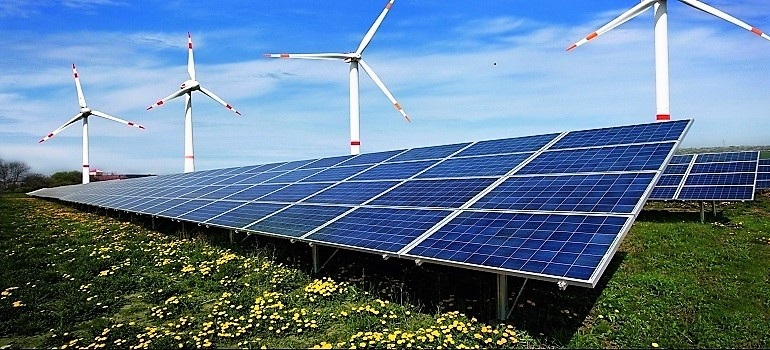
EY in its 53rdRenewable Energy Country Attractiveness Index (RECAI) revealed that the renewable energy sector is entering a new phase of subsidy-free growth across the world.
Mainland China and the US remain at first and second positions respectively on the top 40 ranking, while France moves up two positions to third from fifth, led by a new focus on floating offshore wind capacity and doubling of its annual targets for onshore wind capacity additions, says the report.
Other notable gains in position have been seen in South Korea (24th position, up by seven) and Vietnam (26th position, up by 17), which made strong moves with their plans to build new renewable energy projects of 4GW and 475 MW respectively. Norway (36th, up by nine) and Finland (39th, up by three) are bouncing back with planned new investments shored up by power purchase agreements (PPAs) in a near subsidy-free environment. Among those trending downward are Mexico (19th position, down by six) and Taiwan (33rd position, down by six) that have both suffered due to major policy uncertainty.
As renewable energy grows into an increasingly unsubsidized sector, where projects compete in the market on their economic and environmental merits, the latest edition of RECAI examines two related characteristics of this new landscape: how projects are grappling with new-found exposure to wholesale power prices and market imbalance – known as merchant risk – and the growing role of corporate energy buyers in underwriting clean energy projects.
Ben Warren, EY Global Power & Utilities Corporate Finance Leader and RECAI Chief Editor, says: “In this more complex, subsidy-free environment, renewable developers must work harder and smarter to find the revenue certainty they need to finance or monetize their efforts. Europe has led the way with unsubsidized projects in areas with good renewable resources, and multiple projects across the Nordics, UK, and Spain are being developed which are backed by private investment and corporate PPAs to provide the required stability. For the renewable energy market overall, however, a future without government subsidy is one that will no longer be vulnerable to sudden shifts in policy, or to retroactive changes to promised tariffs. Instead, it will be one where market forces impose discipline, drive efficiencies and accelerate the cost reductions that have allowed the sector to stand on its own two feet.”
Corporate purchases of clean energy rocketed last year, with a number of new companies entering the market for the first time. According to the report, last year PPAs supported 13.4GW of clean energy generation, more than double the 6.1GW of PPAs in 2017. The latest RECAI indicates that new companies and new countries are becoming more comfortable with a subsidy-free renewable energy environment. For many companies, the motivation to enter into a PPA is economic – contracts that run for ten years or more, which offer a long-term hedge in the face of volatile power prices. Other companies are choosing to procure renewable energy for reputational reasons or to reduce their exposure to carbon emissions.
The Index further highlights that in a number of jurisdictions, such as Japan and Indonesia, it is difficult to enter into PPAs with developers due to regulatory barriers. However, new countries are realizing that the investment into energy infrastructure need not come from taxpayers. In markets such as Taiwan, corporate PPAs are now possible, while in other markets – such as France, Spain and Australia – changing conditions are resulting in PPA volumes taking off.
ALSO READ:Global energy investment stabilised above USD 1.8 trillion in 2018: IEA
The current edition of RECAI includes a detailed look into the Brazil and China renewable markets. The report examines Brazil’s recent trends and deals in renewable energy, as its economy recovers from the recent slowdown, interest rates return to normal and anticipated positive changes to energy policy augur well for the sector. China’s renewable energy market is undergoing a transition, as the government seeks to rein in the cost of subsidies. However, with continuing concerns about pollution, falling technology costs, and revived interest from international players, growth in the world’s largest clean energy market is set to continue.
ALSO READ: Energy investment has risen most rapidly in India: IEA
Benoit Laclau, EY Global Energy Leader, says: “Thanks to rapidly declining costs, the competitiveness of renewables is no longer heavily tied to financial incentives. The outlook for clean and renewable energy looks very positive, but it needs stable policies supported by a long-term vision. With these in place we can expect a large and stable market to develop, attracting investment beyond current expectations — from individual, corporate, government and financial sponsors. We continue to see strong moves towards an all-electric future, driven by growth in renewable energy and non-traditional end uses of electricity. We foresee a sustained growth in demand for clean, carbon neutral electricity driving investment in new energy technology, including battery storage and electric vehicle infrastructure.”
A major recent growth trend in the renewables sector has been offshore wind, which has been a large success in Europe, and is now increasingly venturing into new countries. While Europe will see significant continued growth over the coming decade, emerging markets for offshore wind include the United States, mainland China, Japan, Taiwan and South Korea. The report examines the conditions as to which markets are likely to prove most interesting to investors, as they have very different support programmes, political backing and openness to international participants.

